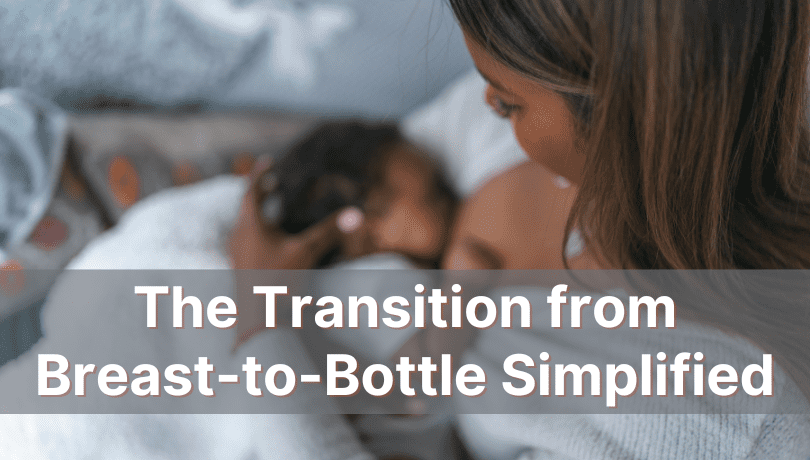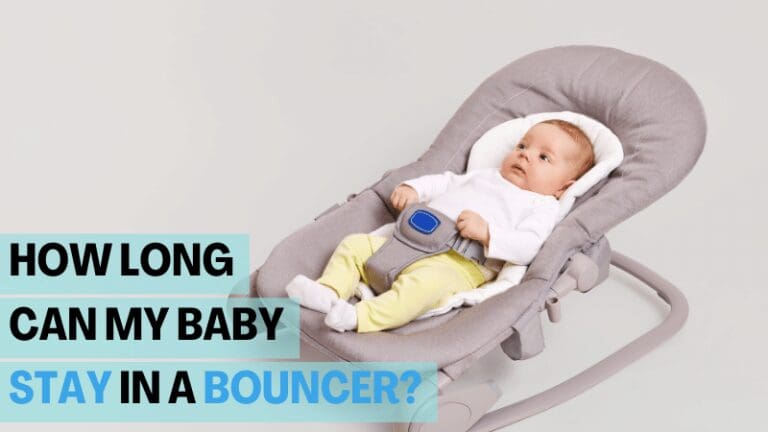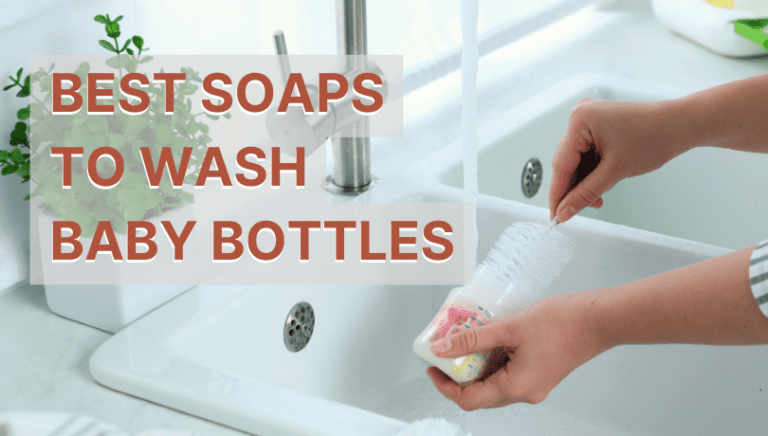Transition from Breast to Bottle: Bottle Feeding Simplified
Breastfeeding offers so many health benefits for the baby and the mom! However, you’ll eventually need to introduce baby bottles to your little one too. And the transition from breast to bottle can be overwhelming at times, so, let’s talk about how we can simplify it.
The good news about bottle feeding? Now, you can share feeding responsibility with your partner or relative!
When I wanted to introduce baby bottles to my child, I wondered about the ideal time to make the switch. And I’m positive that you have some of the same questions too. So, let’s get started with this transitioning guide. I’ll talk about when to start bottle feeding, ways to ease into bottle feeding, and what you can do if your baby refuses the bottle.
Table of Contents

When to Introduce Baby Bottles to a Breastfed Baby?
Please introduce bottles, preferably after your baby turns 3–4 weeks old. Even experts recommend this age. Just know that it’s good to start in small steps at this stage, so eventually, your baby can get used to the change.
- You can also introduce formula to your baby’s diet at this stage. If you’ve been struggling with milk supply, take your doctor’s advice and try giving your baby their first bottle of formula milk. You can also combine breastfeeding and formula milk too!

- Mothers who are soon ending their maternity leave have to introduce their babies to bottles at least a few weeks before they resume their work. This, in turn, makes bottles a habit for your baby.
- You can also pump breast milk and fill the bottles to ease your feeding schedule. That way, you can store the milk for later or let your partner feed your baby.
Some moms begin bottle-feeds even earlier, but I’d recommend that you consult your pediatrician in such situations.
At about the end of 4 weeks, I began pumping and storing breast milk in bottles and handed over some feeding duties to my husband and mother. My husband even loved his skin-to-skin bonding time with our children whenever he fed them.
How to Introduce Bottles to a Breastfed Baby: 7 Tips
Transition is certainly not an easy process for babies or their mothers. Some babies accept the bottle in one shot, while others take time. However, here are tips to make the transition smoother.
1. Wait For The Right Age
- As I said before, it helps to wait at least 4 weeks to introduce a bottle to your little one.
- During the initial few weeks post-birth, a mother’s body takes time to produce enough milk for a baby. Similarly, by 4 weeks, a baby masters the art of sucking. So, that’s the perfect time.
- By this stage, mothers also get used to the baby’s routine and milk consumption.

2. Get The Right Bottle
- With different options available in the market, new parents wonder which bottle to get and end up buying a bigger size or the wrong nipple.
- Choose a bottle wisely – it should be well-vented and have a wide neck.
- Also, you have to be prepared for your baby to reject the bottle. They may not always like the nipple shape or the bottle. Get ready for tantrums!
3. Breastmilk First
- Some mothers are blessed with a healthy milk supply, so if that’s your case, pump and fill up your bottles with breastmilk alone! This can also help you relieve breast engorgement and leaky breasts.
- Once your child accepts the bottle with breastmilk and practices the habit, you can slowly introduce formula, particularly if your milk supply is low.
4. Choose The Right Hour
- When transitioning, timing plays a major role. I fed my babies with bottles during the hours when they were the most active. It’s also better to give them the bottle right after breastfeeding.
- When a baby is full, they are happy and there are fewer chances of fussing or refusing the bottle. Likewise, choose a quiet environment for a feed and minimize their distractions.
5. Share the Responsibility
- Distancing yourself from your little one for a few moments does wonders at times.
- I know this is very difficult to do, but you’ll have to let your partner, parents, or caretaker bond with the baby so that feeding becomes easier over time.
- Babies tend to throw more tantrums when they are with their mothers. So, take a break and ask for help.

6. Positioning
- When it’s time to introduce the bottle to your baby, make sure they are placed in a comfortable position. This can help with a smoother transition.
- Either hold them close in your arms or in a semi-upright position. Now, slowly tilt the bottle towards the baby and make sure that the milk flow is even.
7. Take your Time
- Every baby is different and their pattern of acceptance differs from one another, too. So, dear mothers, don’t rush.
- Let your baby settle into the change. Let them try the new equipment, play with it, and finally as they accept it, you are all set to go.
Paced Bottle Feeding: The Technique and Benefits
Many of you may be aware of this technique called paced bottle-feeding. This method is handy when transitioning from breast to bottle. Here, the babies take control of the feed, just like breastfeeding. Whenever they feel full, they take out the nipple or refuse the bottle.
Here’s how you can try it.

- First, prepare a small bottle with a slow-flow nipple. You can fill the bottle with either breast milk or formula. Then, hold your baby comfortably and rest their head on your arms.
- When your baby shows hunger signs, bring the bottle’s nipple close to your little one’s lips. Once your baby opens their mouth wide, insert the nipple very slowly. Mimic breastfeeding here. Don’t let the milk flow just yet. Wait for them to suck a little.
- Now, as your little one starts sucking, tilt the bottle slightly and fill half of the nipple with milk. Once your baby starts swallowing milk, you are almost there. Let your baby take their own time. Just like breastfeeding, they will swallow slowly with the bottle.
- Once your baby starts swallowing and asks for more, repeat the steps. Also, once they are full, they will reject the bottle or turn away from the bottle.
This worked well for me. My baby was very comfortable with this style. Paced bottle feeding has immense benefits too:
- Your baby will adapt to drinking smoothly and not rush with feeding.
- With paced feeding, you have a very low risk of overfeeding.
- This also reduces the risk of colic and other discomfort.
Recommended Reading: Can You Reheat Breast Milk?
What If My Baby Refuses The Bottle?
As a parent, you also have to be prepared if your baby refuses the bottle.
Do not worry. It is quite natural.
- All you have to do is – go easy. Do stress-free feeding.
- Show them some love and talk with the mini version of you. Mimic breastfeeding with them. Do lots and lots of cuddles.
- It’s easier to transition a happy baby from the breast to the bottle.
Also, a top tip – try experimenting with different bottle nipples. Some nipples may be too hard or not have a good flow. Choosing the right nipple can go a long way.
Takeaway: Transition from Breast to Bottle
The transition from breast to bottle will take time. But trust me, mothers, you’ve got this. You will be able to bottle-feed them in no time. Go with the flow and allow some time for yourself and your baby too.
Remember, a few children never accept the bottles. But, do not worry. You can always try feeding them with a spoon and use sippy cups too. However, know that the baby should be 6 months old ideally to try their hands on sippy cups or spoon-feeding.
If your baby is still resisting the bottle, do not hesitate to consult your pediatrician.
Happy feeding.






